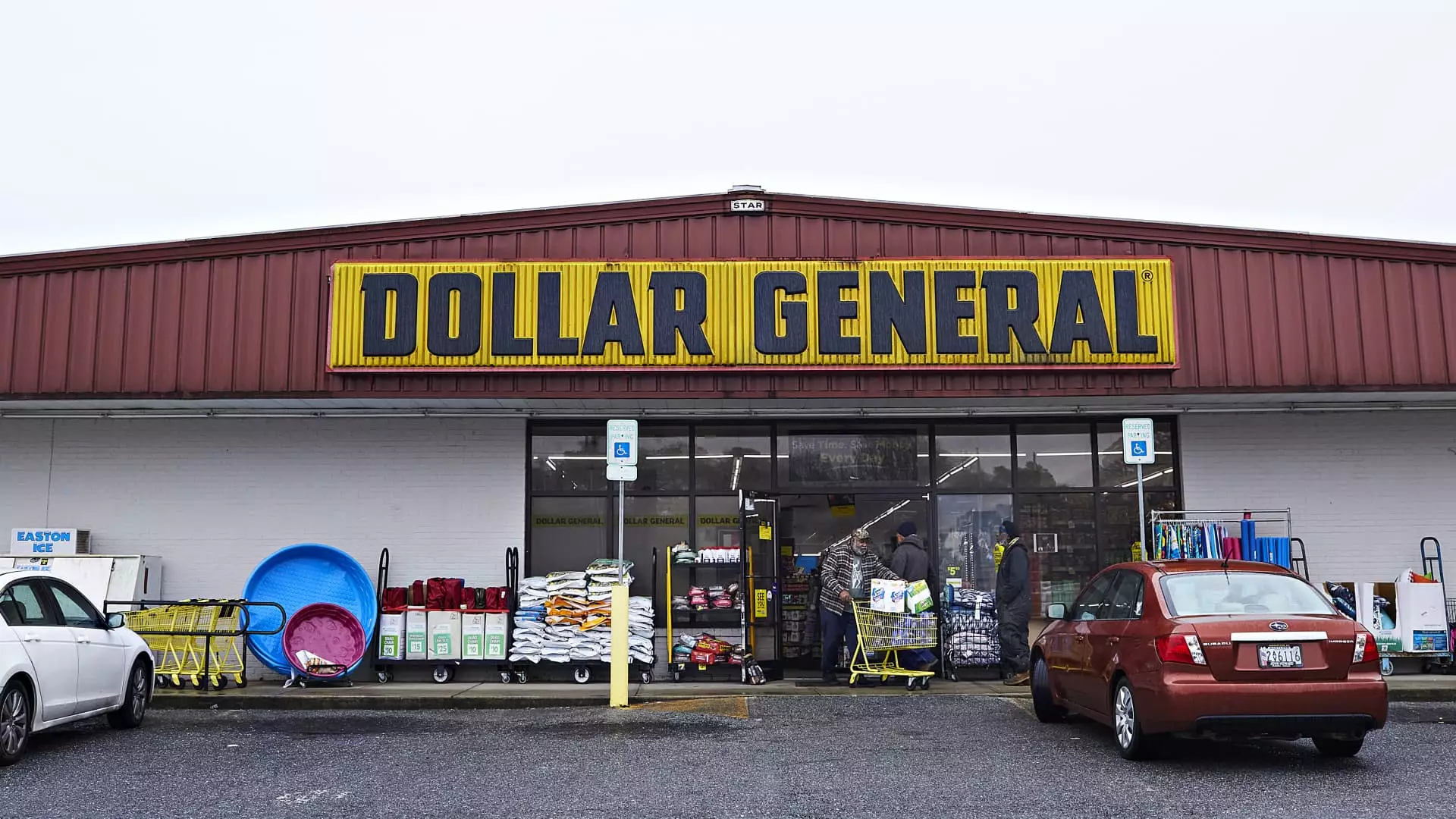In a landscape plagued by economic uncertainties, Dollar General has emerged as an unexpected standard-bearer for stock performance, registering an impressive 36% increase in value since the inauguration of President Donald Trump. This remarkable rise places the discount retailer in a notable position, ranking third in percentage-point growth within the S&P 500. Behind tech juggernaut Palantir and tobacco titan Philip Morris, Dollar General’s ascent illustrates the shift in investor sentiment—one that highlights how consumer staples can serve as a refuge during turbulent times.
This extraordinary performance, significantly above the sector average, cannot merely be attributed to market trends; it reflects a calculated pivot by consumers towards affordability and practicality in the face of escalating inflation and evolving trade policies. Amid such economic challenges, it’s reasonable to question if Dollar General’s environmental adaptability signifies more than just financial savvy—it could be the embodiment of a broader cultural shift among American consumers, driven by necessity rather than luxury.
Against the Grain: Strategic Defensive Positioning
Part of Dollar General’s success stems from its unique operational strategy, maintaining a product mix that is less impacted by external trade pressures. Analysts have pointed out that only about 4% of Dollar General’s products are imports, a stark contrast to many of its competitors grappling with tariffs on Chinese goods. The company’s focus on consumable products—making up 82.2% of its sales—positions it favorably against the risk waged by escalating duties on non-consumables.
This business model has allowed Dollar General to weather market instabilities that sent other retailers scrambling. For many companies, the recent spikes in tariffs have resulted in reduced consumer spending and market fears. Yet, Dollar General remains a reliable haven for shoppers looking for value, particularly during economic downturns when discretionary spending tightens. This adaptability raises an essential inquiry about how other retailers can learn from Dollar General’s approach and rethink their inventory strategies in response to geopolitical uncertainties.
Challenges Ahead: The Competitive Landscape
Even as Dollar General basks in a well-deserved stock glow, it must contend with mounting competition that jeopardizes its market position. Giants like Walmart, Amazon, and Costco have not only established formidable online platforms but are increasingly dominating the e-commerce landscape. As Walmart’s delivery service, Walmart+, continues to expand, it’s becoming evident that Dollar General’s reliance on brick-and-mortar stores could present vulnerabilities in an ecosystem that values convenience.
Analysts warn that the “800-pound gorilla” moniker attributed to Walmart encapsulates the daunting challenge that small and mid-size retailers face in today’s rapidly evolving marketplace. The question remains: can Dollar General innovate robustly enough to capture and retain the attention of a consumer base that is swiftly gravitating toward swift and easy purchasing experiences? The clout of e-commerce is undeniable, and the pressure to pivot quickly is palpable. For Dollar General, the ability to balance its traditional strengths with the evolving shopping preferences of consumers will determine its longevity.
Consumer Behavior: The Power to Adapt
Another captivating aspect of Dollar General’s recent growth involves the shift in consumer demographics. The retailer has successfully catered not only to low-income shoppers but increasingly attracted middle-income “trade-down” consumers seeking value in uncertain economic times. This dual market appeal has emerged as a silver lining in an otherwise challenging environment, providing Dollar General an edge in attracting a broader customer base amid fluctuating economic conditions.
However, it is crucial to consider the overall impact of external economic pressures on these shoppers. While Dollar General has benefitted from a surge of mid-tier consumers trading down, there is an inherent risk if ongoing inflation and tax policy changes hinder the purchasing power of its primary clientele. As consumers increasingly scrutinize every dollar spent, whether out of caution or necessity, Dollar General’s strategy must be agile and intuitive in meeting the heightened demand for value-driven products.
Dollar General stands at a crossroads: armed with strategic advantages, a diverse product offering, and a growing customer base, its triumphs signal robust resilience amidst a sea of uncertainty. Yet, the path forward is laden with challenges—from fierce competition to the unpredictable influences of macroeconomic policies. As the company adapts to meet the evolving needs of its diverse customer demographics, it will ultimately set the tone for its future trajectory within an ever-competitive landscape.

